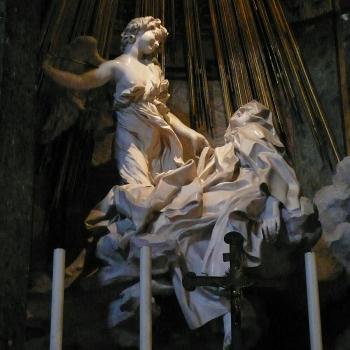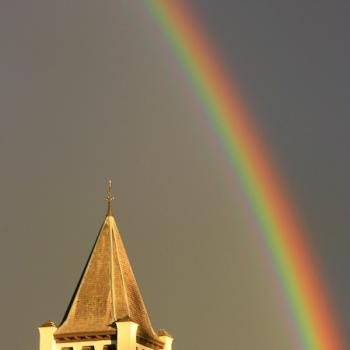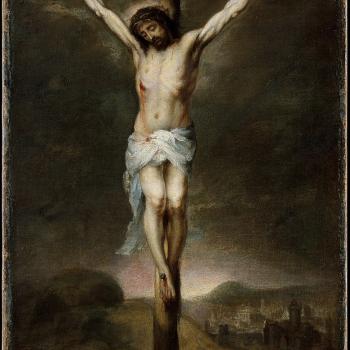Hey y’all. I am back from the Gay Christian Network’s 2016 conference. It was a great experience; I met a ton of people, got a lot out of both of the keynote speakers I saw (Broderick Greer & Misty Irons), and went to some excellent workshops e.g. one on the challenges faced by gay students at Christian campuses. Here’s my post on GCN 2015. Hoping to see many of you all in Pittsburgh next year!
I also led one workshop. It was called “Side B: Changing Our Churches.” GCN has this terminology, which I understand but don’t love, where “Side A” = progressive sexual theology aka gay marriage (and maybe other gay sexual relationships depending on the church, tradition, individual etc) is holy and should be blessed by the church, and “Side B” = the two ways God has given us for honoring Him with our sexuality are celibacy, or marriage between one man and one woman. You can see why they go with a short phrase rather than all that explanation! Anyway so I’m “Side B” apparently. I wanted to do a workshop where Side B Christians came together and shared our stories of positive change in our churches, and got ideas for how we can make our churches places of refuge and discipling for celibate gay Christians.
American Catholic spaces–parishes, schools, etc–are increasingly open to orthodox, openly gay voices. So a lot of my own examples involve some level of “official” support: a high school invites me to speak, a priest gives compassionate spiritual direction, etc. My own church has a ministry for gay and lesbian Catholics and our families and friends, and although that’s a really complicated story with good and bad elements, it’s sort of amazing that I have a place I can go once a month where other local gay Christians (both “Side A” and, more remarkably to me, “Side B”) can be found.
But lots of people don’t have any of that kind of official backing or openness in their churches. And so I want to say that there are things you can do in that situation too. In some ways, working outside the hierarchical structure of your church can give you a lot of freedom. I am pretty anti-clerical by nature and chafe under the restrictions I sometimes accept as the cost of official recognition. If you are a gay Christian layperson you can take things into your own hands. Some possibilities:
* Social media. It’s easy to laugh at social media but this is how I’ve found so many gay Christians. If you can’t have a support group at your church, can you have a “secret” facebook group? If you’re not sure how out of the closet you want to be, but you know you need to meet people in your area who can help guide you in your walk with Christ, can you make a pseudonymous twitter account and tweet at a) local Christian groups or b) “Side B” gay Christian types? (I’m @evetushnet btw) Community builds slowly like a snowball, but social media is one way to get the snowball rolling. It multiplies the effect of ordinary word of mouth.
* One thing I noticed at GCN is that so many “Side A” people were working hard–sometimes at a real emotional cost to themselves–to acknowledge and address “Side B” gay people’s needs. But they often only recognized the first half of our pastoral needs. (This is exactly 1/2 more than most churches on any “side” recognize.) “Side A” Christians would talk about how they worked with “Side B” gay people on coming out and overcoming shame, so we can see God as a loving Father of Mercies. That’s huge. But there is a certain feeling of, “…And then what happens?” If you accept gay marriage then in our “Lava” culture you have a future to offer gay people, a narrative and a hope. “Side B” people desperately need pastoral care that can help us find other vocations: pathways of love for those not called to marriage or religious vows.
And so I’ve found that one way to let in a little bit of light for “Side B” gay people in churches that aren’t ready to talk explicitly about our needs is to focus on alternative vocations. This has worked in super-progressive environments and in very conservative ones. Instead of saying, “Let’s talk about the needs of celibate gay people,” you say, “Let’s talk about the historic Christian value of celibacy: How can celibacy free modern single people to serve, and how can we be loved by the church?” Or, “Let’s have a [sermon/small group/speaker/discussion/potluck] on friendship as a Biblical form of love. How can we shape our own lives around friendship and take it more seriously?” Or, “Is our church a family for single people? Are we brothers and sisters to one another? How can we become the kind of church family we see in the New Testament?”
You can bring in people living in intentional community; you can seek out unmarried people who are willing to talk about the ways they’ve served the church and experienced God’s love in their vocations. Churches often know that single people feel kind of isolated. If you offer specific, concrete ways to address that isolation and make a haven for single Christians, you can make a good life within Christian orthodoxy a lot more imaginable for gay people.
* Look for parachurch and non-church institutional support. When I spoke in Steubenville, the money for my plane ticket etc was raised via GoFundMe and I was hosted by a local bookshop. This opens new opportunities for you if you need e.g. space for a group meeting, or somewhere to advertise. It also, and maybe more importantly, helps you see that people do support you. The world, including the Christian world, is bigger than the church community you may be struggling with right now.
I believe really strongly that a Christian needs a church. Don’t go it alone (“just me and Jesus”) unless you really, really have to. But sometimes you do need to say, “This church is damaging my faith. It’s killing me to be constantly told that I am not a part of the community, or that I’m self-hating and oppressive and need to find a partner, or that I’m destroying America, or that I’m lying about my experiences and beliefs. I need to find somewhere where I can grow in love for Jesus and my neighbor.” So if your only options for support as a Side B Christian are parachurch or non-church, that may prompt you to reassess your relationship with your church, and I won’t say you nay on that. But you may find yourself in a more ambivalent position where you know you’re being called to stay but you feel pretty isolated. Parachurch and non-church support can give you some breathing room in that situation.
* Finally, here’s an idea I stole from the Christian campuses workshop: What about public displays of beauty? These college students did the most gorgeous thing. They held a candlelight procession and prayer vigil on their campus. As they walked, people came up to them and asked, “Hey, so what are the candles all about?” They explained that (iirc) they were praying for lgbt students at their school. And although they started out with only a handful of brave students, by the time they reached the site for the vigil they had a whole crowd of students bearing candles.
Beauty is witness. This almost liturgical public witness perfumes with prayer a space that had been made toxic for gay students. It’s a reminder that prayer is the most practical thing you can do. It’s solidarity and surrender all at once.
Are there places where you can bring a little beauty, a little radical prayer, and by doing so, bring hope to celibate gay Christians?
If anybody out there has more ideas or stories of things that have worked to bring positive change for “Side B” gay people, tell me about it! [email protected]
May we all learn to love lgbt people the way God does.











